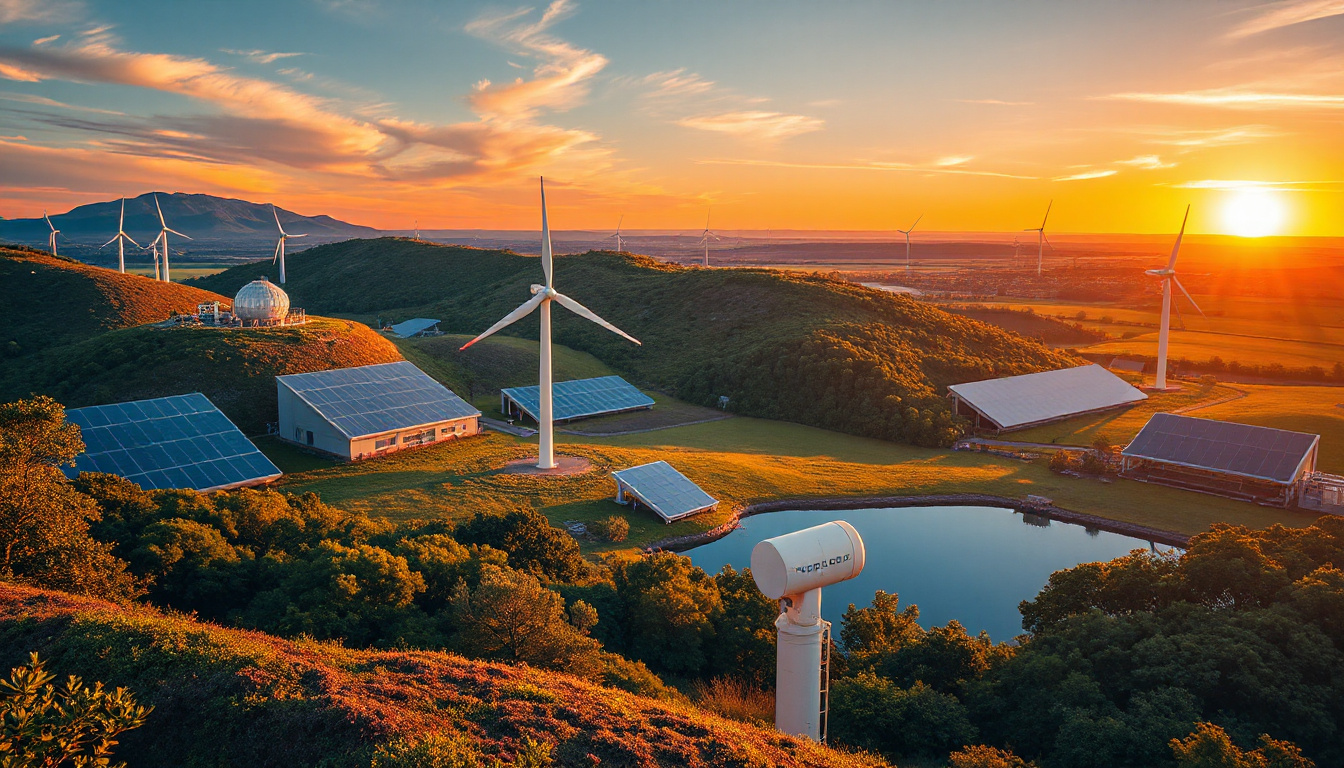The urgency for sustainable solutions to combat climate change has never been greater.
As we face unprecedented environmental challenges, the spotlight is increasingly on renewable energy projects as a viable path to a cleaner, healthier planet.
In this article, we will explore how innovative renewable energy projects are transforming our world, revolutionizing the way we produce, consume, and think about energy.
From solar farms that power entire cities to offshore wind installations that harness the strength of the sea, these projects are not just technological marvels—they are essential to securing a sustainable future for generations to come.


5. Future Trends in Renewable Energy Developments
###
5.
Future Trends in Renewable Energy Developments
As the world continues to grapple with the effects of climate change, the demand for cleaner, more sustainable energy solutions has never been more pressing.
Renewable energy projects are at the forefront of this transition, evolving rapidly to meet both technological and consumer needs.
Here are some key trends shaping the future of renewable energy:
1.
Increased Investment in Infrastructure
Governments and private investors are recognizing the importance of transitioning to renewable sources.
Expect to see significant investments in solar panels, wind farms, and energy storage systems.
2.
Advancements in Energy Storage Technology
As renewable energy sources depend heavily on weather conditions, innovations in energy storage are crucial.
New battery technologies, such as solid-state batteries, are making energy storage more efficient, allowing for better utilization of renewable energy projects.
3.
Integration of Smart Grid Technology
Smart grids are becoming a game-changer in managing the fluctuating supply of renewable resources.
By using AI and IoT, these grids optimize energy distribution and can enhance the reliability of renewable energy projects.
4.
Decentralized Energy Systems
More individuals and businesses are turning to local renewable energy projects like community solar installations.
This trend toward decentralization promotes energy independence and enables consumers to directly engage in the energy market.
5.
Policy Support and Incentives
Governments worldwide are implementing favorable policies to spur the growth of renewable energy.
Tax incentives, rebates, and subsidies for renewable energy projects are expected to expand, encouraging more stakeholders to invest.
6.
Focus on Sustainability and Circular Economy
Future renewable energy projects will increasingly consider environmental impacts beyond just carbon emissions.
Incorporating sustainable practices in production and installation processes aligns with the growing global focus on the circular economy.
By understanding these trends, stakeholders can better position themselves to make informed decisions regarding renewable energy projects, thereby contributing to a more sustainable future.
Frequently Asked Questions
What are renewable energy projects?
Renewable energy projects are initiatives that focus on generating energy from natural resources that are replenished over time, such as solar, wind, hydro, and geothermal sources.
These projects aim to provide sustainable energy solutions to reduce reliance on fossil fuels and minimize environmental impact.
What key innovations are currently shaping renewable energy projects?
Key innovations include advancements in solar panel technology, wind turbine efficiency, energy storage solutions such as batteries, smart grid technology for better energy distribution, and the development of hydrogen fuel as a clean energy source.
Can you provide examples of successful renewable energy projects?
Yes!
Examples include the Noor Ouarzazate Solar Complex in Morocco, which is one of the largest solar power plants in the world, and the Hornsea One offshore wind farm in the UK, which is currently the largest offshore wind farm, providing clean energy to millions of homes.
What challenges do renewable energy projects face?
Challenges include high initial investment costs, regulatory hurdles, technological limitations, competition with established fossil fuel industries, and the need for infrastructure improvements to support renewable energy integration.
What future trends should we expect in renewable energy developments?
Future trends include increased investment in smart grid technology, the rise of decentralized energy systems, greater use of artificial intelligence in energy management, further reductions in the cost of renewable technologies, and enhanced international collaboration on climate goals.

